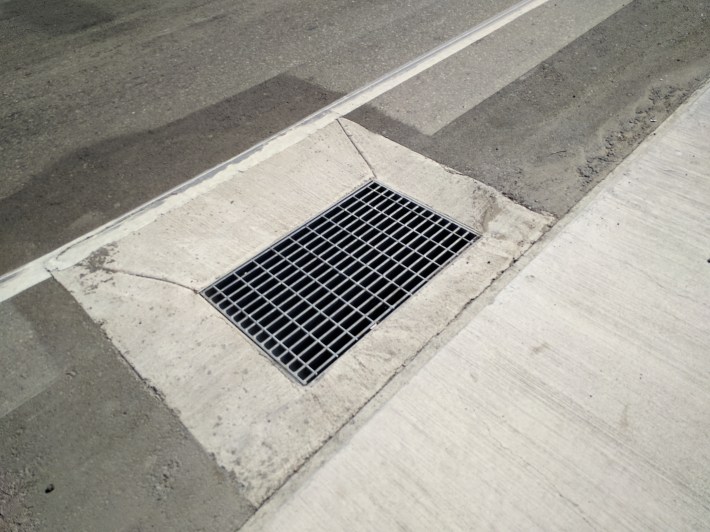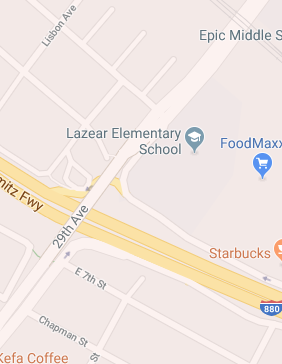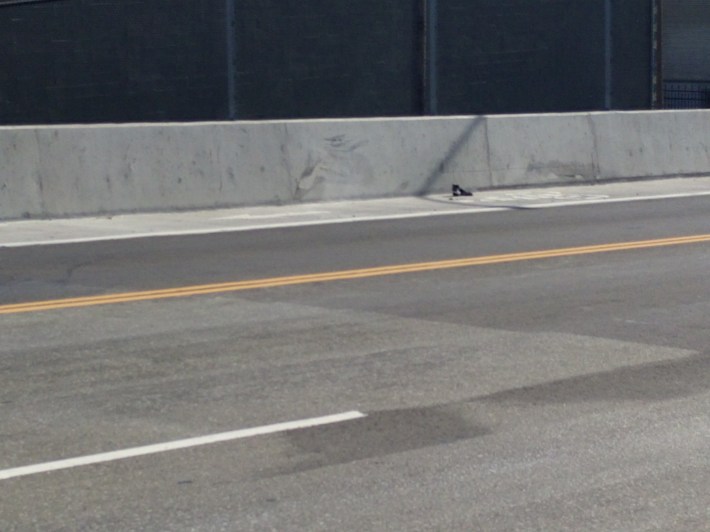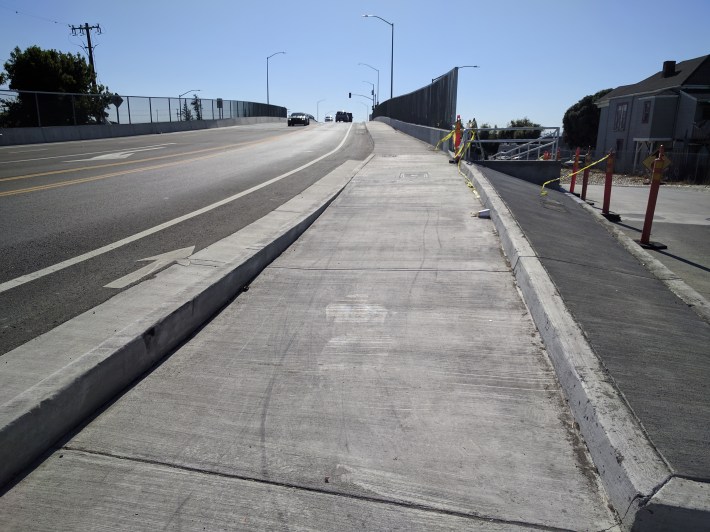If you want to know why the death rate on Oakland's roads keeps going up, look no further than Caltrans/the Alameda County Transportation Commission (ACTC)'s newly opened bridge across I-880 in Fruitvale, on 29th Avenue.
Bike East Bay's Robert Prinz put it best in the tweet below: "Any organization that is concerned about bike/pedestrian safety would consider a crossing sightline this bad to be engineering malfeasance."
Here's the previous condition versus the "upgrade". Any organization that is concerned about bike/pedestrian safety would consider a crossing sightline this bad to be engineering malfeasance. pic.twitter.com/4rDLH1Si3z
— Robert Prinz (@prinzrob) October 17, 2018
Prinz is talking about the bike lane that goes under the bridge, on the Jingletown side of I-880, which the new bridge crosses. But the same could be said about almost any aspect of this bridge, which has a sidewalk on only one side, twelve-foot freeway-style lanes, and a landing right in front of Lazear Elementary school.
A transportation official close to the project (he spoke on condition of anonymity) said the bridge was originally rebuilt because truck clearances on I-880 were insufficient and occasionally a truck would hit a bump and brush against the bridge's underside.

Clearly, the bridge needed work, but, back around 2007/2008 when the designs were being finalized, it was also an opportunity to make it safer and improve bike and pedestrian access between Alameda, Jingletown, and the rest of Oakland--including the nearby BART station in Fruitvale.
Instead, Caltrans and Alameda County opted not to even have a sidewalk on the side of the bridge next to Lazear Elementary School. "It sucks they didn't put a sidewalk on there," said Dave Campbell, advocacy director for Bike East Bay, in a phone interview with Streetsblog.
But, he explained, the bridge was designed at a time when it was tough to get a bike lane or any kind of pedestrian amenities on a new project--especially a Caltrans and ACTC project.

The strategy, he explained, was to get some kind of toe-hold on the bridge--in the form of striped bike lanes on the shoulder--so they could go back in and improve things later. The transportation official who spoke with Streetsblog confirmed that's why he pushed to at least get a striped lane.
"That makes it easier to do a road diet and finish the bikeway," added Campbell.
Maybe so, but one has to wonder how any traffic engineer or planner could build infrastructure like this in the first place. After all, engineers are supposed to follow a basic ethics code to build safe infrastructure as well as flatly refuse to do otherwise. The "bike lane" on the school side of the bridge is against a concrete crash barrier (editor's note: apologies to readers, but I'm not going to risk getting crushed against a slab of concrete trying to use a bike lane like this, which is why the photos are from the sidewalk side).

There's also a traffic sewer on both landing sides of the bridge, complete with multiple beg buttons and staged crosswalks so pedestrians have to spend an inordinate amount of time to get across it. Clearly, this was built with car throughput in mind and nothing else.
Similar conditions exist, said reps from Bike East Bay, on the nearby 23rd Avenue bridge, also over I-880, which was rebuilt as part of the same project.
Streetsblog reached out to Caltrans public affairs to get more details about who actually designed this bridge and what might be done to fix things and will update this post when an answer comes. Meanwhile, Streetsblog California, as part of a larger interview, asked Laurie Berman, current Caltrans director, about the deficiencies. She said district bike and ped advisory committees will help guide future designs.

"It's a work in progress," she added. "Not everyone's going to like everything we do. Sometimes we won't quite hit it but there are still opportunities to go back and fix some things."
Look for the full interview coming up in Streetsblog California.
Meanwhile, Bike East Bay's Prinz said he is hopeful a new generation of Caltrans planners will work with advocates to improve conditions as quickly as possible. "Caltrans has agreed to a site visit with local advocates in January to discuss opportunities to fix the identified bike/walk issues."






